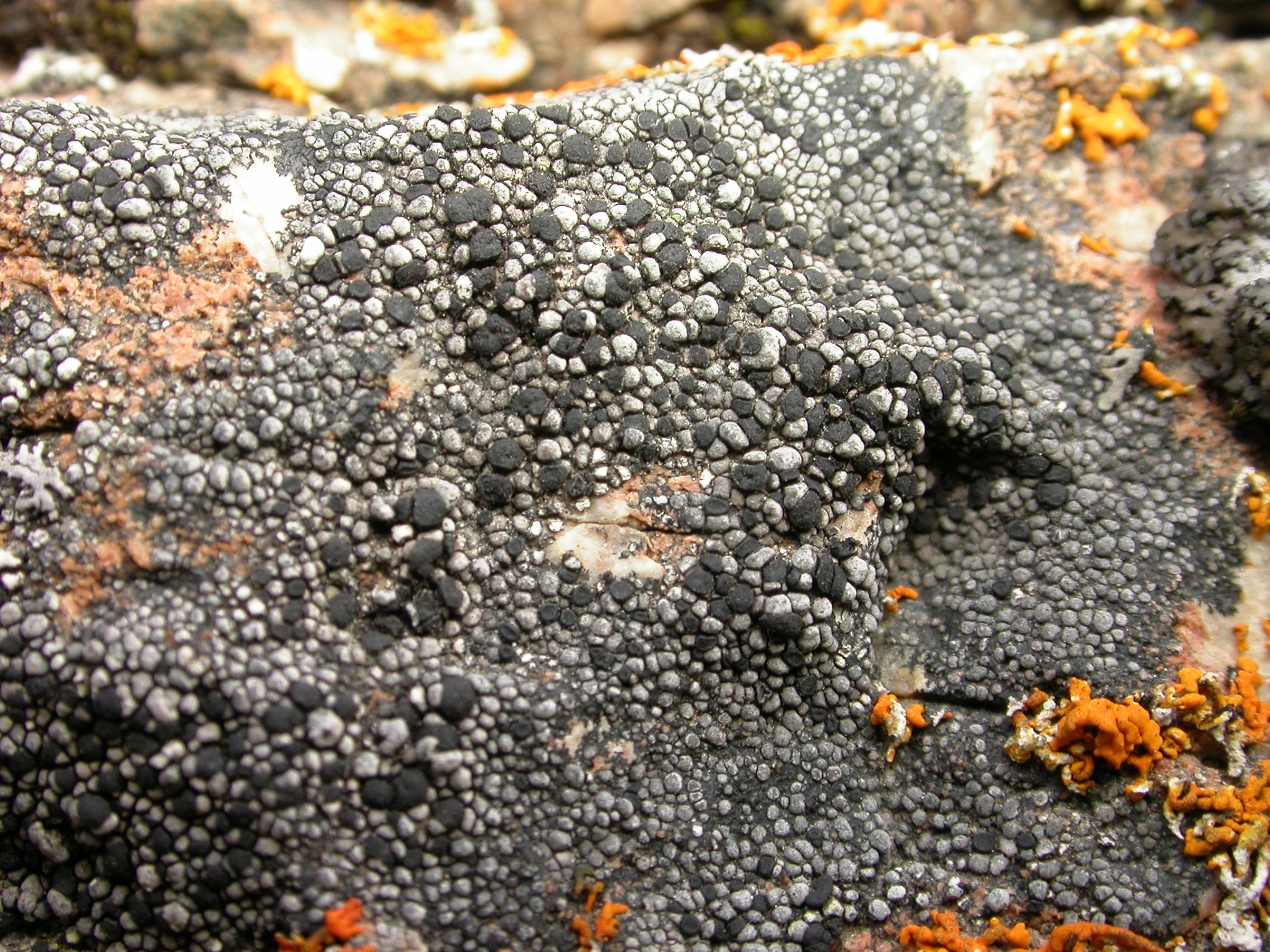Rhizocarpon geminatum
- Innhold
- Morphology
- Chemistry
- Habitat
- Comment
- Look-alikes
Morphology
Thallus areolate, up to 10 cm diam.; hypothallus well developed, black; areolae up to 0.8 mm diam., medium grey to dark brown, dull, scattered to contiguous, orbicular to angular, plane to hemispherical; medulla KI–. – Apothecia up to 1 mm diam., black, epruinose, more or less orbicular, plane to weakly convex, marginate; excipulum brownish black in the rim, pale brown the inner part, usually containing crystals dissolving in K, brown pigment K+ red; hypothecium dark brown, K–; hymenium colourless; epihymenium reddish brown, usually containing crystals dissolving in K, pigment K+ red; ascospores 2 per ascus, eumuriform, soon becoming dark greenish brown, 45–68 × 18–28 µm. – Conidiomata not seen.
Chemistry
Three chemical strains occur in Norway: 1) stictic acid and trace of norstictic acid, 2) rhizocarpic acid (in the medulla only), ± stictic acid, and 3) no lichen substances; spot tests: medulla PD+ orange, K+ yellow or PD–, K–; C–.
Habitat
On exposed, siliceous and calciferous rock. Common.
Comment
Rhizocarpon disporum is very similar to R. geminatum, but has only one spore in the ascus. Rhizocarpon subgeminatum and R. suomiense have persistently hyaline or at most pale green ascospores. The strain containing rhizocarpic acid in the medulla (R. geminatum f. citrinum (Flotow) Schade) usually have dark brown, small, plane, angular areolae and is restricted to more or less calciferous rock in the lowlands.



